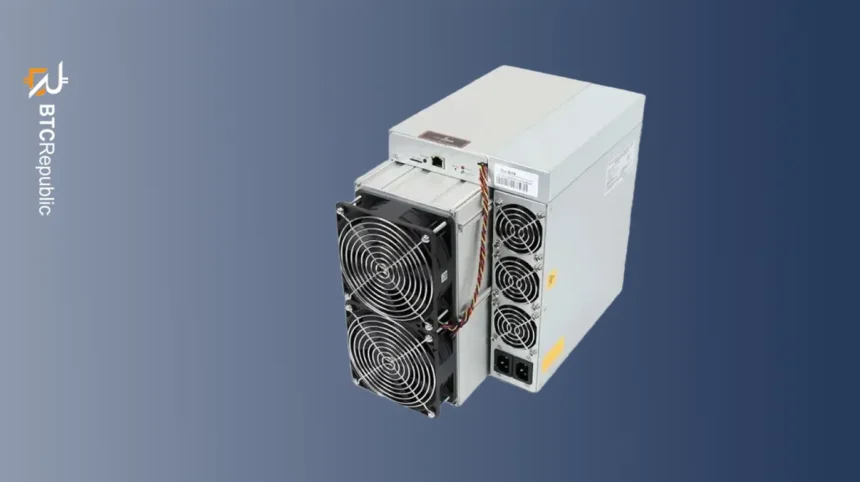In today’s dynamic and constantly evolving world of crypto mining, the kind of hardware you choose can be a key determinant of your rate of mining success. As digital assets continue to become widely adopted, there is a corresponding need for mining tools characterized by high levels of efficiency and power.
Like many other cryptos, Kaspa is attracting attention in the crypto market, with traders interested in tracking its future price movements. With unique attributes such as fast block rates, decreasing emissions, being open source, offering significant security, and more, Kaspa is a compelling digital asset for investors.
This guide examines one of the KASPA-oriented mining products in the market known as Bitmain KS3 Miner (9.4Th/s). Th/s is short for terahashes per second.
- What Is The Bitmain KS3 Miner (9.4Th/s)?
- Key Features Of The KS3 Miner (9.4Th/s)
- How To Set Up The Bitmain KS3 Miner (9.4Th/s)
- Comparing The Antminer KS3 9.4 Th/s And IceRiver KS3 (8Th/s)
- Mining Difficulty In The Kaspa Ecosystem
- Outlook For Antminer KS3 (9.4Th/s)
- KS3 Miner Pros And Cons
- Conclusion
- FAQs
- How much does Antminer KS3 (9.4Th/s) make a day?
- What is the price of Bitmain KS3 Miner KS3 (9.4Th/s)?
- Can I mine Bitcoin with KS3?
- How loud is the KS3 Miner (9.4Th/s)?
- What are some troubleshooting measures to take if the hash rate decreases unexpectedly?
- How can I monitor the performance of the KS3 Miner?
- Are there other KS3 Miner models apart from the KS3 (9.4Th/s)?
What Is The Bitmain KS3 Miner (9.4Th/s)?
The Bitmain KS3 Miner (9.4Th/s), also known as Antminer KS3 (9.4Th/s), is a cryptocurrency mining device made by Bitmain, a Chinese firm renowned for its ASIC miners.
The KS3 Miner (9.4Th/s) is specifically designed to mine the Kaspa cryptocurrency (KAS) based on the kHeavyHash algorithm.
Established in 2013, Bitmain is a top manufacturer of digital currency mining equipment, including the Antminer Series. The Beijing-headquartered company is a technology leader that commands a significant share of the global market, catering to clients in over 100 countries.
Bitmain operates an R&D center in Singapore and also has facilities in the US, Hong Kong, Kazakhstan, Malaysia, Lithuania, Paraguay, and the UAE.
Since their emergence, the Antminer Series has played a crucial role in changing mining from a hobbyist interest into a well-developed, professional industry that is open to a wide variety of participants. The Antminer KS3 (9.4Th/s) was introduced last year.
Key Features Of The KS3 Miner (9.4Th/s)
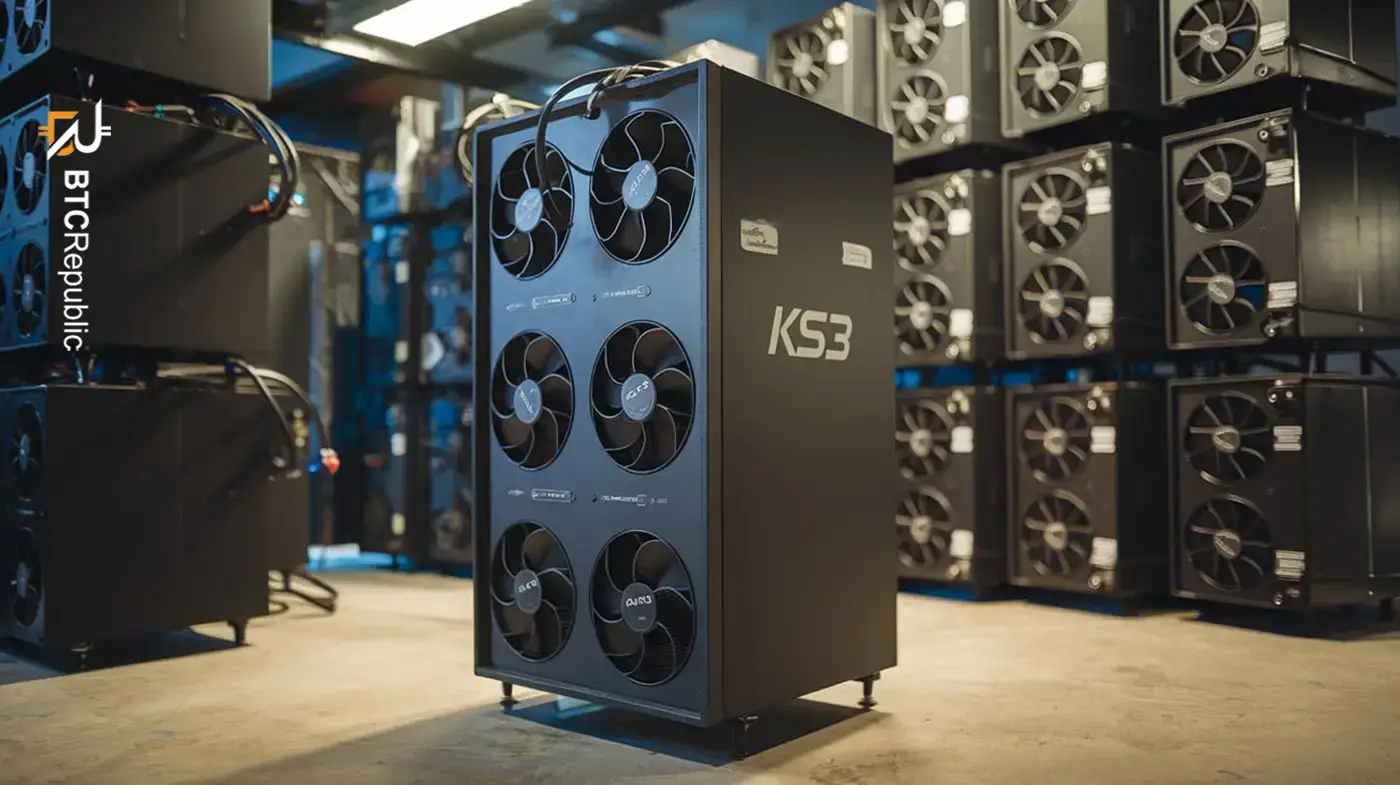
- High hash rate: The Antminer KS3 (9.4Th/s) offers outstanding mining capabilities with a remarkable 9.4 terahashes per second hash rate that ensures a faster cryptocurrency mining experience.
- Energy efficient: This product utilizes a modern power-saving technology to optimize energy use while boosting mining output. It enables users to achieve greater mining rewards while seeking to lower their electricity expenses.
- Effective cooling system: Designed with Bitcoin mining’s heat-intensive nature in mind, the Antminer KS3 (9.4Th/s) helps ensure performance stability even when mining becomes very intense. It will help keep your equipment running efficiently without any risk of overheating.
- Easy-to-use interface: The Antminer KS3 (9.4Th/s) interface is straightforward and intuitive, allowing you to easily set up and track your mining operations. It offers access to real-time information and enables you to make settings adjustments with ease.
- Robust build quality: Built for durability, the Antminer KS3 (9.4Th/s) design allows you to mine for extended periods. This dependable, long-lasting rig will offer you prolonged and rewarding crypto mining.
How To Set Up The Bitmain KS3 Miner (9.4Th/s)
Preparation
- Position your KS3 (9.4Th/s) in a location with good ventilation, as it generates significant heat. Ensure the machine is on a flat surface to allow for proper circulation of air.
- ASIC miners require vast amounts of power, so you’ll need a special power supply infrastructure to use them. The standard power setup in North America is not ideal for a KS3 Miner.
- Therefore, arrange for a 30 amp, 240V circuit; a 30 amp, 240V power distribution unit (PDU); two sets of C-13 to C-14 power cables, and a network cable for Ethernet connectivity since the Antminer KS3 is not compatible with Wi-Fi. If you are a novice in electrical installation, make sure you partner with a qualified electrician.
- Next, check to guard against loose connections by ensuring that every appliance is tightly plugged in. If everything is okay, then it’s time to power on the miner.
Configuration
- Power supply activation should lead to a corresponding illumination of the Ethernet light.
- Next, locate your Antminer KS3 (9.4Th/s) IP address.
- You can find this address in two main ways: by logging into your router or using free software.
For Web Browser Access
- Copy and paste the IP address into your web browser. When prompted, enter your username and password.
- Use “root” for both the username and password, as this is the default for all Antminer models.
- Once logged in, you can access the Antminer KS3 (9.4Th/s) Web GUI.
For Mining Pool Integration
- On your settings page, connect to your favorite Kaspa mining pool by entering your password, the pool information, and your wallet address.
Comparing The Antminer KS3 9.4 Th/s And IceRiver KS3 (8Th/s)
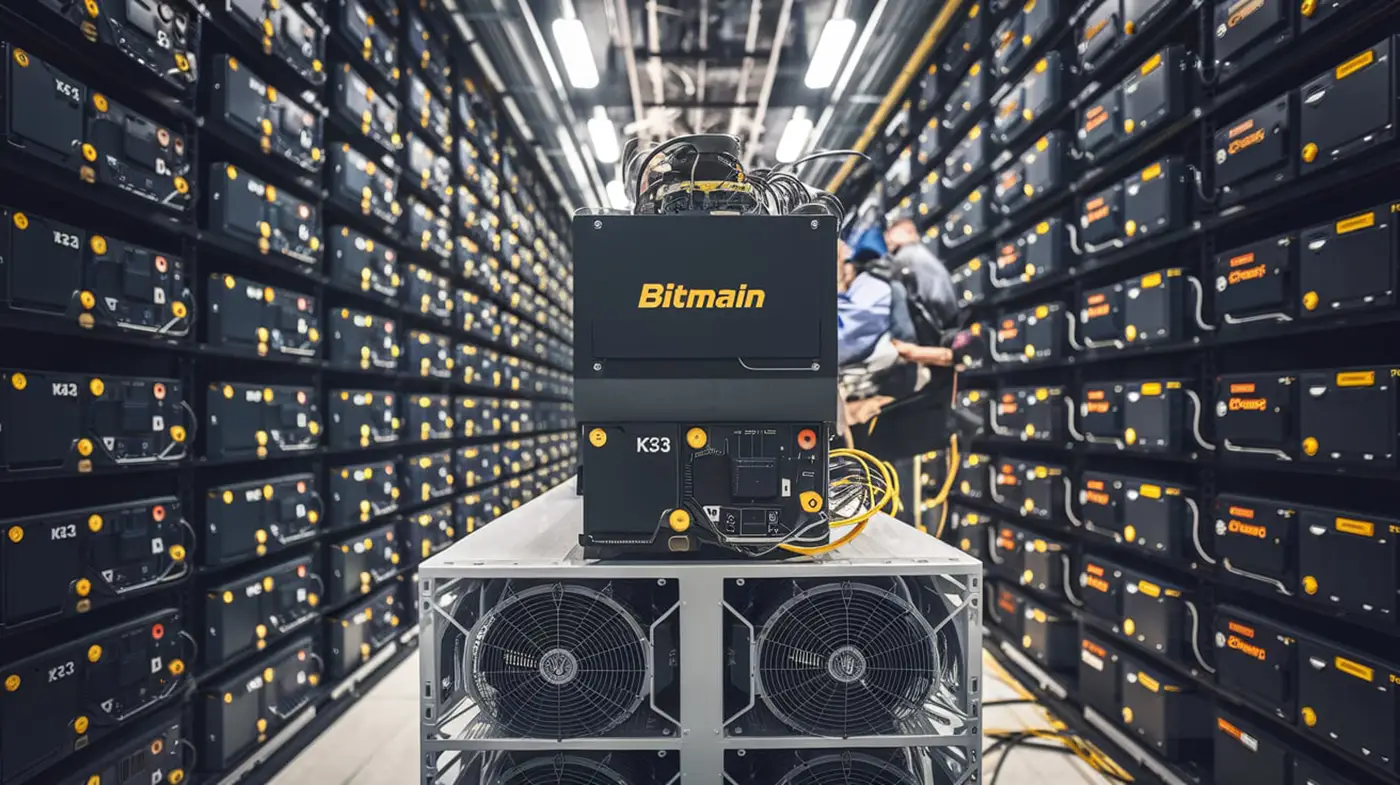
The Iceriver KS3 Miner (8Th/s) is a popular Kaspa miner built by Iceriver and launched in the same year as the Bitmain 9.4 Th/s. So, how do both products compare against each other?
Technical Comparison
Hash Rates
While the Antminer KS3 comes with a 9.4 Th/s hash rate, the IceRiver KS3 has a hash rate of 8 Th/s. The Antminer KS3’s greater hash rate implies a capacity to solve cryptographic puzzles more quickly, resulting in the potential to mine more Kaspa within a shorter timeframe.
However, it’s crucial to recognize that you may need to support a higher hash rate with increased costs, for instance, more power consumption.
Power Consumption
As noted in the foregoing passage, higher hash rates and increased power consumption tend to have a direct relationship. Another relationship to note is that the higher the power consumption, the bigger the electricity costs.
At 3200W, the IceRiver KS3 has a lower power consumption rate than the Antminer KS3, which consumes 3500W.
Build Quality And Durability
Durability and build quality are crucial for the lasting performance of mining equipment. With their rugged metal casings, both the Antminer KS3 and IceRiver KS3 are designed to endure tough conditions and continuous mining.
The IceRiver KS3 features a sturdy construction and is optimized for a range of temperatures and humidity levels, ensuring longevity.
Likewise, the Antminer KS3 exemplifies Bitmain’s reputation for reliable miners and is built to last through extensive use. While both models are engineered for durability, their long-term performance will also depend on the particular conditions in which they are operated and how well they are maintained.
Performance Comparison
Performance
In terms of practical performance, both the Antminer KS3 and the IceRiver KS3 have notable advantages. The IceRiver KS3 operates at a hash rate of 8Th/s, proving effective in standard mining environments by offering solutions to Kaspa’s cryptographic challenges. Users have experienced consistent performance, even during prolonged use.
Meanwhile, the Antminer KS3 boasts a higher hash rate of 9.4Th/s, enabling it to tackle calculations at a faster rate, which can result in increased rewards. However, this enhanced capability may also require more energy, a critical factor for miners to consider.
Profitability
Profitability remains a primary focus for miners. The IceRiver KS3, with its reduced power usage requirement, may yield better profits in areas with higher electricity costs. Conversely, irrespective of its higher power consumption rate, a superior hash rate means that the Antminer KS3 could provide higher returns, particularly in regions with lower electricity costs or among miners with a preference for short-term or quick gains.
User Friendliness And Setup Ease
User-friendliness and ease of setup are essential for miners with limited technical skills. Both the Antminer KS3 and IceRiver KS3 prioritize simplicity in their design. The installation process for each miner is easy, with clear guidelines provided. Both require a reliable power source and an Ethernet connection.
The IceRiver KS3 is somewhat smaller, which could benefit miners with space constraints. Although a bit larger and heavier, the Antminer KS3 is designed to easily align with several mining operations and conditions.
Cost Comparison
Initial Outlay
For many miners, the initial cost of mining hardware is an important consideration. The Antminer KS3 and the IceRiver KS3 both launched in 2023 but are priced differently due to their differing features and performance.
The Antminer KS3, known for its higher hashing power, is usually more expensive than the IceRiver KS3. However, prices can vary depending on the supply source and demand conditions. Miners should evaluate not just the purchase cost but also the potential ROI that each machine may provide, taking into account the peculiarity of their mining environment and the cost of electric power.
Long-Term Costs
Long-term expenses, particularly those related to power consumed and infrastructure upkeep, play a significant role in assessing the degree of profitability of mining operations. The IceRiver KS3, which consumes 3200W, can be a more cost-effective option over time, especially in areas with higher electricity costs.
Though the Antminer KS3 has a higher power usage of 3500W as opposed to the 3200W consumed by the IceRiver KS3, it may still be a wise investment if the extra hash power results in much larger mining returns. However, in areas with high electricity tariffs, the IceRiver KS3 may be more cost-effective.
The long-term costs for maintaining both models are similar but may differ based on the intensity of usage and environmental factors.
Mining Difficulty In The Kaspa Ecosystem
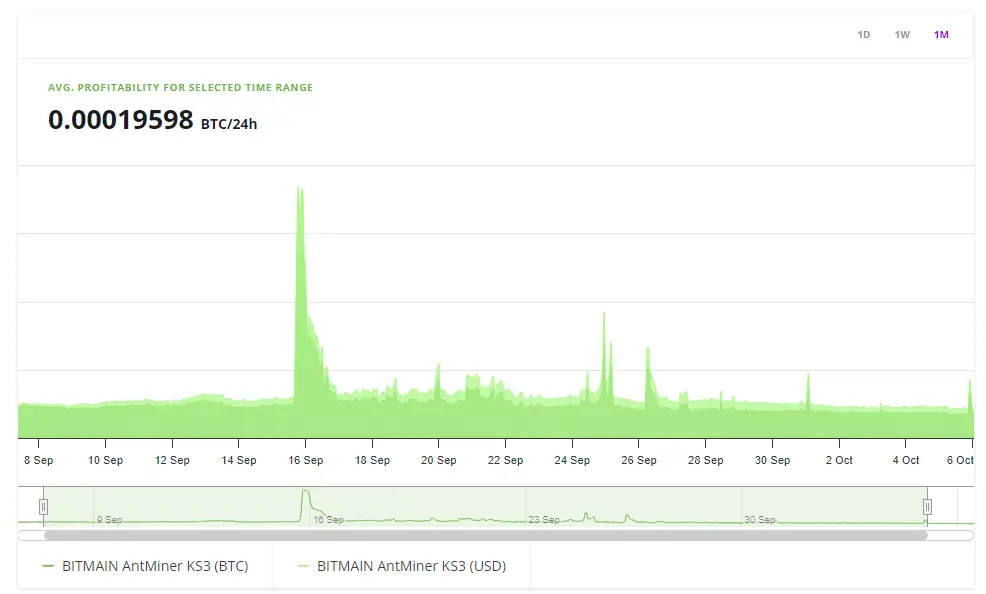
The hash rate of the Kaspa network indicates the total computing power contributed by all of its miners. As shown in the chart below, new entrants to the network increased significantly from December 2023, a trend that was also evident around this year’s summer period.
This growth coincided with the release of some Antminer models by Bitmain. Typically, it takes some time for new, more efficient ASIC miners to become widely used. But once the product settles, its impact becomes manifest. This pattern accounts for the rapid rise in the Kaspa network’s hash rate not long after Bitmain’s product launch.
With more miners coming and utilizing advanced equipment like the Antminer, the total computing power increases, reflecting the rising interest and engagement in Kaspa mining.
Kaspa operates on the KHeavyHash algorithm, an energy-intensive Proof of Work (PoW) algorithm similar to those of well-known cryptocurrencies like Bitcoin and Zcash.
Network difficulty is an important factor in the cryptocurrency world. It indicates how hard it is for miners to arrive at the computations needed to create a new block. New mining entrants on the Kaspa network increase the difficulty level, meaning that finding new blocks and earning rewards become tougher.
The difficulty level can be represented numerically as a value that indicates the average number of times miners need to compute a hash function to generate a block.
As the number of active miners changes, so does the difficulty level. When more miners contribute to the network, the overall hash rate increases, which means blocks are found more quickly. To keep the rate of block discovery steady, the network increases the difficulty.
In contrast, if fewer miners are active, the hash rate decreases, and the network will lower the difficulty level to make it easier for miners to compute block-creating solutions.
This difficulty-hash rate relationship is crucial for managing the average mining time per block. It helps to ensure that the network is stable and secure since regulating difficulty helps mitigate cyber threats while promoting decentralization.
Outlook For Antminer KS3 (9.4Th/s)
Determining the profitability of mining hardware is complex, as it hinges on a number of variables, such as the machine’s hash rate, the price of the cryptocurrency being mined, mining difficulty, trends in the market, and local electricity costs, among others.
Consequently, miners need to stay informed about market conditions and other trends before committing to any mining rig.
The price of Kaspa is particularly significant for assessing the profitability of the Antminer KS3. Given the volatility of cryptocurrencies, miners should monitor price changes closely. Reviewing historical price trends and previous performance can provide guidance when it comes to estimating future Kaspa prices.
Kaspa has several advantages, including being open source, facilitating fast transactions, and offering enhanced security. Its price history has shown stability with minimal fluctuations, making Kaspa mining appear promising, especially with the advanced Antminer KS3 (9.4Th/s). As Kaspa continues to gain traction, more users are becoming aware of its latest mining equipment.
However, the crypto mining industry is constantly evolving with new trends emerging. The introduction of newer and more technologically sophisticated mining rigs in future may influence Antminer KS3 (9.4Th/s) profitability.
If the popularity of Kaspa’s grows, it could lead to increased competition within its mining network, potentially lowering mining profits. In summary, miners should take into account all potential future developments before selecting mining hardware.
KS3 Miner Pros And Cons
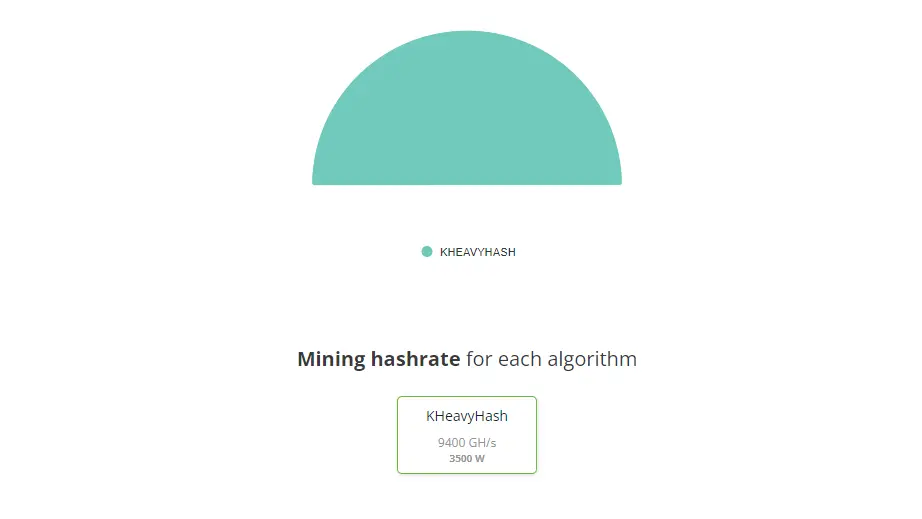
Pros
- Exceptional hash rate: The KS3 Miner boasts an impressive 9.4Th/s hash rate, making it a standout performer with respect to mining power and potential profitability.
- Reputable and reliable: Bitmain, the maker of the KS3 Miner (9.4Th/s), is a reputed and trusted leader in crypto mining rig production.
- Can mine intensively: The KS3 Miner (9.4Th/s) is with high-octane mining in mind and is thus suitable for mining on a large scale.
Cons
- Consumes significant power: The KS3 Miner (9.4Th/s) power consumption rate of 3500W can translate to more electricity costs, particularly in locations where energy rates are costly.
- Bulky size: with its large frame and weight, allocating space to the KS3 Miner (9.4Th/s) can be challenging in less spacious mining environments.
Conclusion
The Bitmain KS3 Miner (9.4Th’/s) is a widely used mining rig among many KASPA enthusiasts, and it’s not difficult to understand why. With an impressive hash rate of 9.4Th/s, this Antminer can help you mine Kaspa profitably.
However, though the KS3 Miner (9.4Th’/s) is designed with a power-saving technology, be cautious of electricity charges since this ASIC machine can consume considerable power. Overall, miners should be aware of likely future developments before adopting mining hardware.
FAQs
-
How much does Antminer KS3 (9.4Th/s) make a day?
Figures tend to vary according to source. However, popular mining app developer NiceHash estimates 16.77 USD per day based on a BTC exchange rate of 64143.68 USD. Another source, MiningNow, calculated a daily earning of 0.44 USD.
-
What is the price of Bitmain KS3 Miner KS3 (9.4Th/s)?
Prices will typically vary according to source. For example, it goes for USD 17,899 on Crypto Miner Bros and USD 3,100 for a fairly used unit at Vipera Tech.
-
Can I mine Bitcoin with KS3?
You cannot. The Antminer KS3 Series is made specifically to mine KASPA, which is based on the kHeavyHash algorithm, unlike Bitcoin, which uses a different algorithm – SHA-256D.
-
How loud is the KS3 Miner (9.4Th/s)?
The Antminer KS3 can rack up to 75 decibels of noise.
-
What are some troubleshooting measures to take if the hash rate decreases unexpectedly?
Potential areas of concern may include network connectivity problems, fluctuating power supply, and/or overheating components.
-
How can I monitor the performance of the KS3 Miner?
Through the dashboard, which contains performance indicators such as accurate real-time hash rate reports, power consumption information, and fan speed, among others.
-
Are there other KS3 Miner models apart from the KS3 (9.4Th/s)?
Yes. Among them include the KS3 7.3Th/s, KS3 8.2Th/s, KS3 8.5Th/s and KS3 8.8Th/s.


